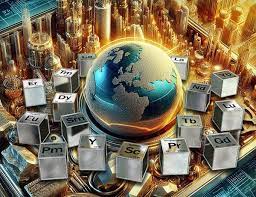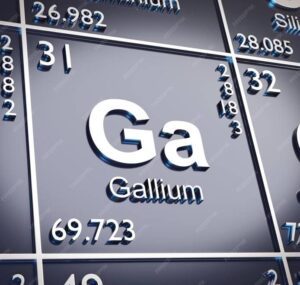
Rare elements are the conventional name for a group of chemical elements in the Periodic Table of D.I. Mendeleyev. Rare elements are conventionally divided into the following categories: light (lithium Li, rubidium Rb, cesium Cs, beryllium Be), refractory (titanium Ti, zirconium Zr, hafnium Hf, vanadium V, niobium Nb, tantalum Ta, molybdenum Mo, tungsten W), scattered (gallium Ga, indium In, thallium Tl, germanium Ge, cadmium Cd, selenium Se, tellurium Te, rhenium Re), rare earth (scandium Sc, yttrium Y, lanthanum La and lanthanides), radioactive (Po, Tc, Fr, Ra, Ac, Th, Pa, U, Pu, Np, Cm, Cf, Am, etc.). However, many of these elements can be assigned to different groups at the same time.
The emergence of the terms “rare elements” and “rare earth elements” is explained by the comparatively late development and use of these elements, which is associated with their low prevalence or dispersion in the earth’s crust. It is this feature that makes the process of their isolation and purification extremely complex and labor-intensive.
The first rare and rare earth elements were discovered in the late 18th – early 19th centuries. However, they began to find practical application only in the 20th century. The situation changed dramatically in the second half of the 20th century, when the emergence of new industrial technologies necessitated the widespread use of such metals and their compounds in a wide variety of areas.But their consumption is still negligible compared to the consumption of metals traditional for mankind.
Extraction and processing of rare and rare earth metals is a huge problem – due, as a rule, to their extremely low concentration in ores.
In addition, technologies for recycling used equipment and electronics have not yet been perfected: currently, no more than 2-3% of waste containing rare and rare earth elements is recycled in the world.
Currently, rare and rare earth metals are widely used in various technologies in the field of electronic devices, production of innovative materials, industrial chemistry and others. Over the past 30 years, the world has seen an explosive growth in demand for such metals, and today there is no industry where they are not used – from the nuclear and aviation industries to glass production.
The use of rare and rare earth metals indicates a high level of technological development of production. Scientists believe that these elements will become indispensable in the transition to more advanced technologies, including bio- and nanotechnology, nuclear and space industry, as well as “green energy”. It is for this reason that rare earth metals are considered strategically important resources, and their presence is critical to ensuring national security and technological independence.


















